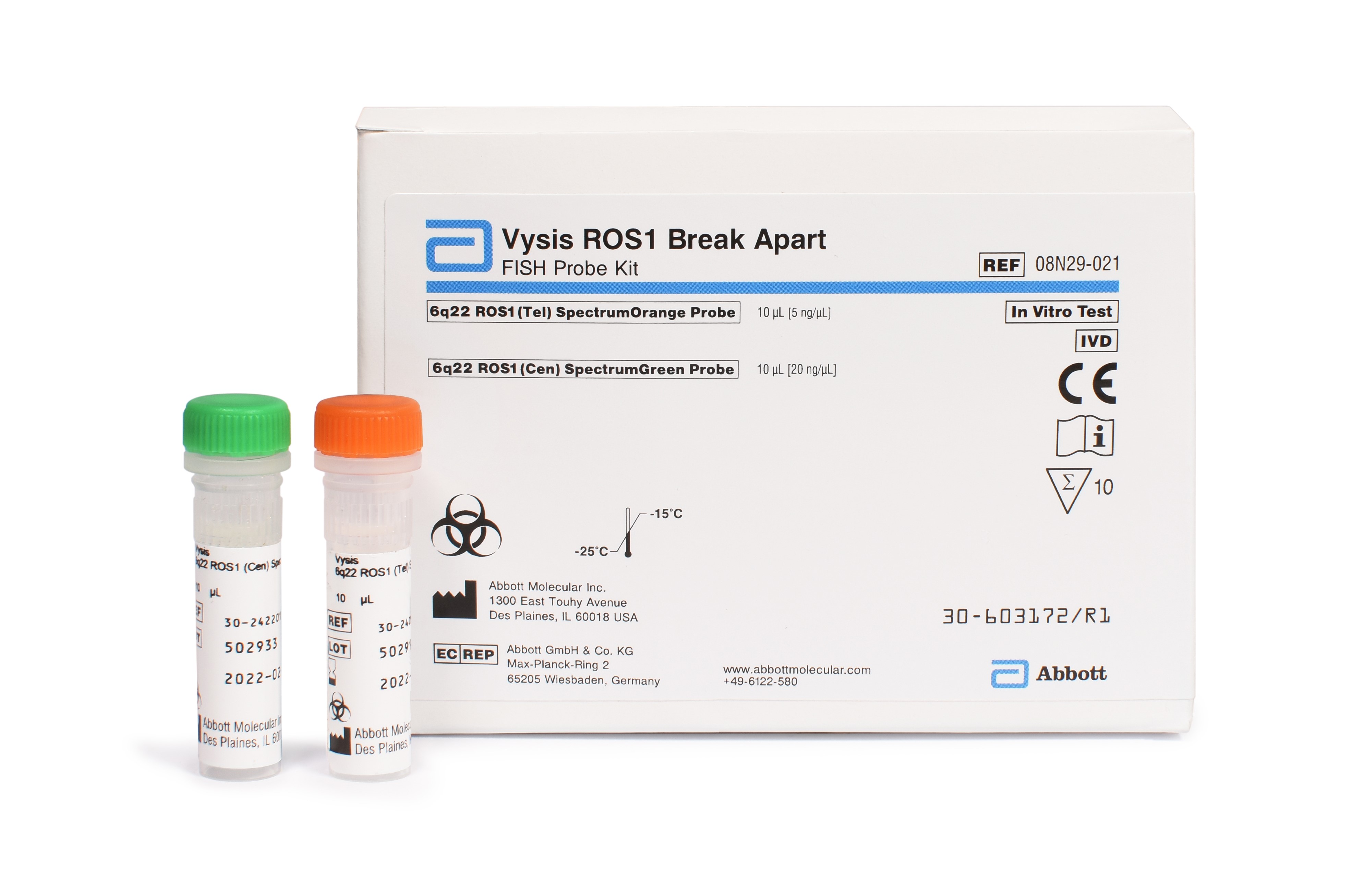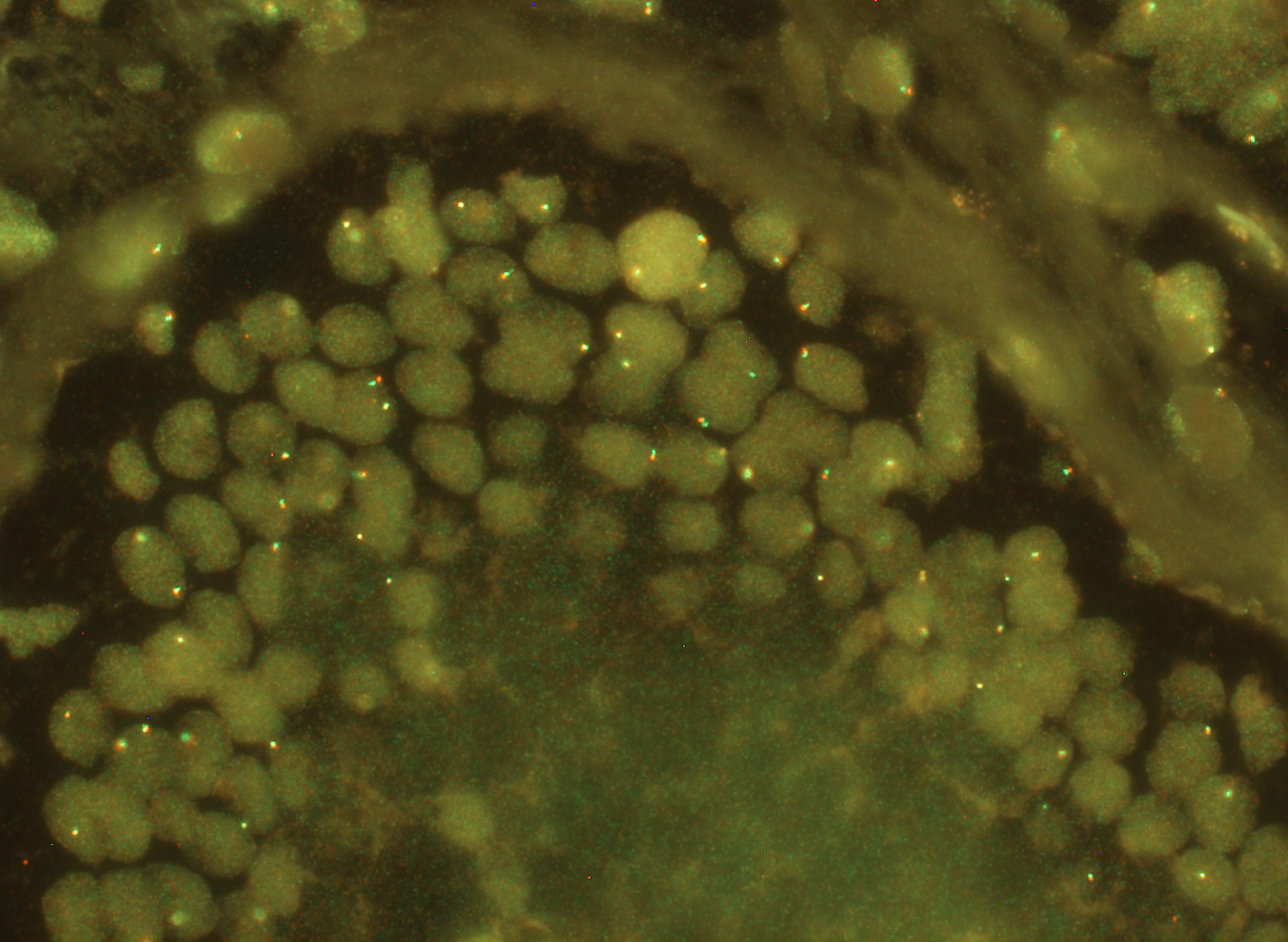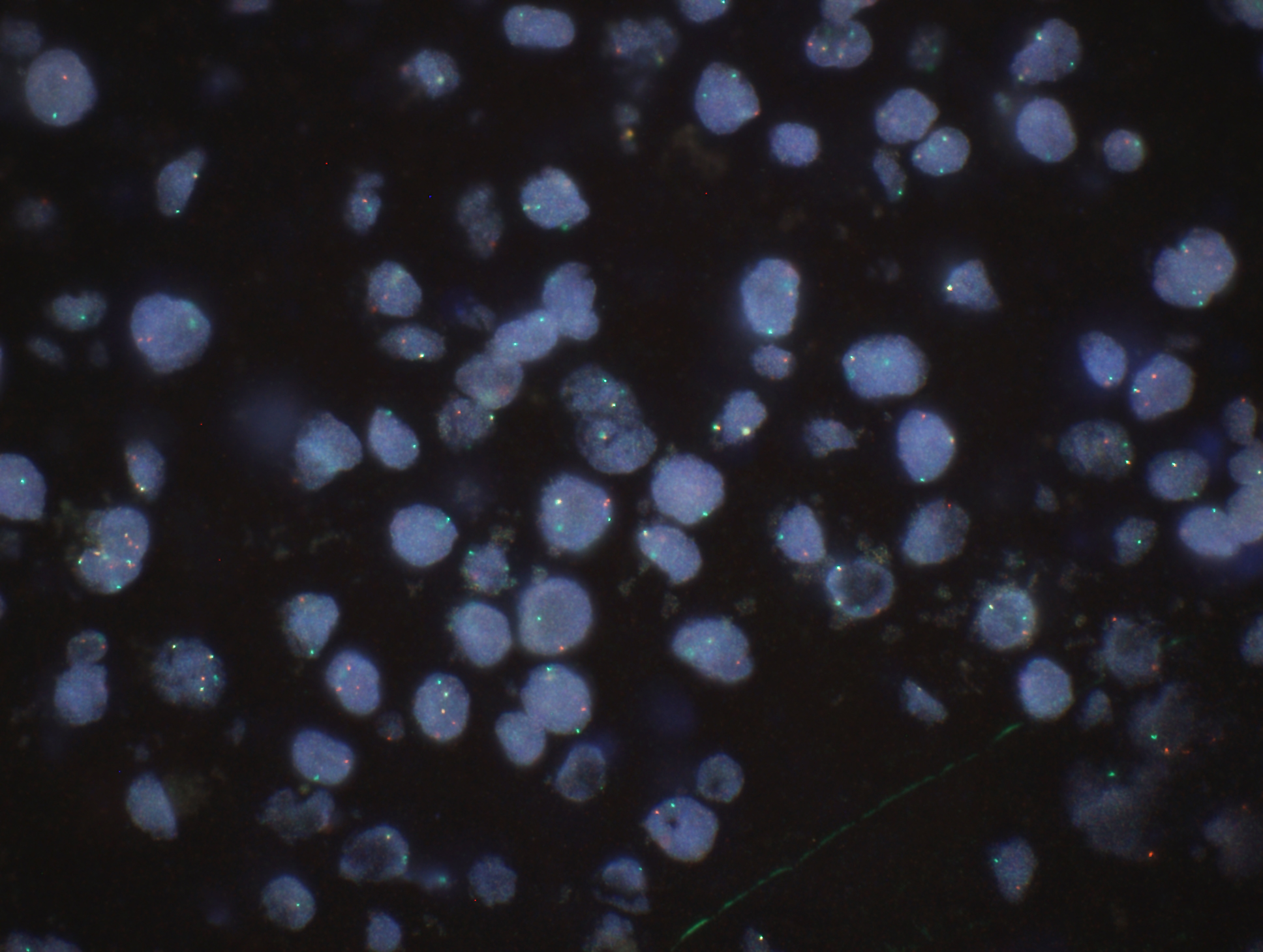INTENDED USE
The Vysis ROS1 Break Apart FISH Probe Kit is a qualitative test designed to identify acquired pathogenetic alterations of the ROS1 gene at the 6q22 location via fluorescence in situ hybridization (FISH) in formalin-fixed, paraffin-embedded (FFPE) human specimens.
ROS1 analysis by FISH is used in conjunction with other clinical and diagnostic information and is not to be used as the sole basis for diagnosis or therapy decisions. This test can be performed manually or in semi-automated format.
PROBE DESCRIPTION
The Vysis ROS 1 Break Apart FISH Probe Kit consists of two fluorophore-labeled DNA probes in TE buffer containing blocking DNA:
- Vysis 6q22 ROS1 (Cen) SpectrumGreen probe [3′]
- Vysis 6q22 ROS1(Tel) SpectrumOrange probe [5′]
The Vysis ROS1 Break Apart FISH Probe Kit consists of two separate probes, located 3' and 5' of the common breakpoint region of the ROS1 gene.
REAGENTS
- 1 vial, 10 μL per vial Vysis 6q22 ROS1 (Cen) SpectrumGreen Probe (200 ng/μL) in TE buffer containing blocking DNA
- 1 vial, 10 μL per vial Vysis 6q22 ROS1 (Tel) SpectrumOrange Probe (50 ng/μL) in TE buffer containing blocking DNA
SUMMARY AND EXPLANATION OF THE TEST*
The Vysis ROS1 Break Apart FISH Probe Kit (LN 08N29-021) uses fluorescence in situ hybridization (FISH) technology to detect ROS1 gene rearrangements at 6q22 involving the receptor tyrosine kinase (ROS1) gene. ROS1 (ROS proto-oncogene 1) is a gene that encodes the ROS protein, a receptor tyrosine kinase (RTK) of the insulin receptor family.
ROS1 gene rearrangement may promote generation of fusion proteins, in which the kinase domain of ROS1 becomes constitutively active, contributing to the transformation potential of ROS1. The pathogenetic rearrangements of the ROS1 gene described in literature involve the 3′ region of the ROS1 gene, which includes its tyrosine kinase domain (exons 36-42), to the 5′ region of the partner gene. FISH break-apart probe methodology has been used extensively for the detection of ROS1 gene rearrangements.
Rearrangement of the ROS1 gene occurs in 0.2% to 2.4% of Colorectal Cancers (CRC) and in 1 to 2% of Non-Small Cell Lung Cancer (NSCLC) patients leading to it oncogenic activation. ROS1 rearrangement was also detected in gastric adenocarcinoma, various types of melanoma, inflammatory myofibroblastic tumor, angiosarcoma, and epithelioid hemangioendothelioma. ROS1 gene rearrangement causes persistent activation of Tyrosine-Kinase (TK) leading to increased proliferation and survival of transformed cells. Inhibition of ROS1 TK by tyrosine kinase inhibitors (TKI) including crizotinib, ceritinib, brigatinib, lorlatinib, carbozatinib, and entrectinib, among others promotes tumor cell death, benefiting patients undergoing treatment and resulting in increased rates of survival.
* Vysis ROS1 Break Apart FISH Probe Kit Package Insert 30-608551/R1




